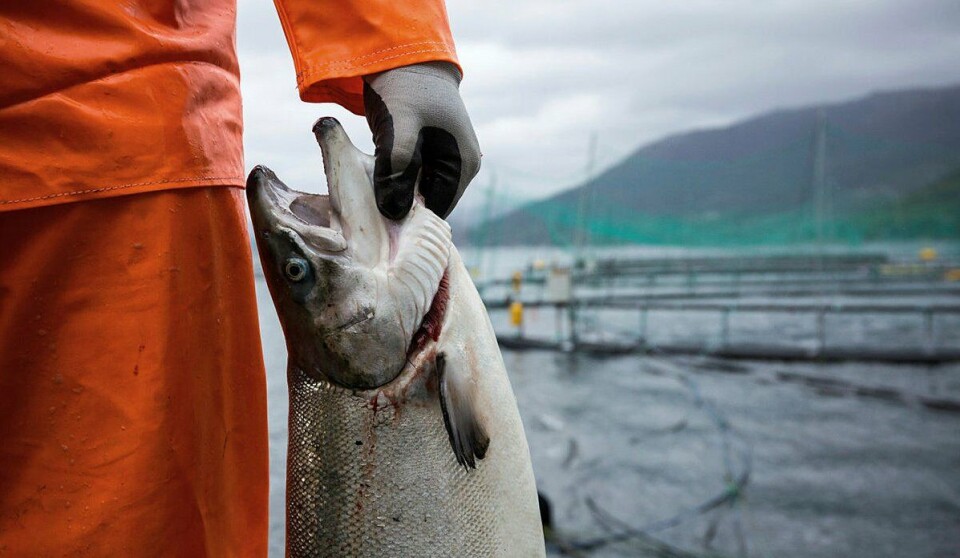
58 million farmed salmon died on Norwegian fish farms last year
Mortality level remained at around 15%
The overall pattern in mortality in Norwegian farmed salmon is the same as 2021, according to a new report.
“Although 58 million is an increase from 57 million in 2021, the number of farmed salmon released into the sea has also increased. There is thus no significant change in the percentage of salmon that die,” said researcher Lars Helge Stien, an author of Risk report Norwegian salmon farming 2023, produced by Norway’s Institute of Marine Research.
In 2018, approximately 335 million salmon were stocked in Norwegian marine farms. This had increased to around 375 million in 2021, and to almost 390 million in 2022.
Welfare 'temperature gauge'
According to the report’s authors, mortality data gives a broad picture of fish welfare, reports Fish Farming Expert’s Norwegian sister site, Kyst.no.
“Mortality statistics do not provide an answer as to what a possible increase or decrease in mortality is due to, but the data is nevertheless a good ‘temperature gauge’ for how things are in salmon farming and where we should focus our research,” said Stien.
Over the course of a year, there is continuous harvesting of salmon that have reached the desired weight, and new salmon are stocked in pens.
“A production cycle of salmon from release to slaughter typically takes 12 to 18 months,” said Stien.
At all times, there will therefore be farms that have newly released small fish, others that have medium-sized fish and farms that have large salmon that will soon be harvested.
Risk changes with size
“The risk picture for what a salmon dies of, diseases and fish welfare, change with size. That’s why we compare survival in the entire period from release to slaughter between different generations to get a correct picture of development in production mortality,” explained the researcher.
For the last generations of Norwegian farmed salmon, mortality on a national basis has been relatively stable at around 15% from release to harvest.
Mortality is defined as the number of fish reported dead plus the number of fish reported as discards – drafts of fish that are of such poor quality that the slaughterhouse cannot use them.
“We assume that draft fish have experienced very poor welfare, which is why we include them in the mortality figure,” said Stien.
Worst in Western Norway
Mortality is greatest in Western Norway (production areas (PO) 2-5) and least in North Trøndelag to Vesterålen (PO 7-9).
“We see that the fish in Western Norway tolerate de-lousing less well than fish kept further north,” said Stien.
In PO 7–9, farmed salmon generally have lower mortality both before and after de-lousing than further south.
“This indicates a healthier and more hardy fish in these areas, which agrees well with the fact that there are few or no outbreaks of the diseases PD (pancreas disease) and AGD (amoebic gill disease) here,” said the researcher.
Mortality changes
Mortality is relatively stable from generation to generation for most production areas, but with some exceptions:
- PO 2 had unusually high mortality for the 2020 generation
- In PO 5, increased mortality appears to be a trend
- PO 9 and 10 had particularly high mortality for the 2018 generation due to a bloom of toxic algae
- In PO 1 and 13 there are very few facilities. Therefore, individual events such as outbreaks of disease or failed de-lousing operations have a major impact on the total mortality of these POs from generation to generation.
Stien currently does not have any clear answers as to what these changes are due to, but hopes to find the answer in the long term:
“We will continue to analyse more detailed data where we will also include other data sources. Then we hope to get clarity on, for example, why mortality has increased in production area 5,” he said.
Fish farmers regularly report figures for mortality to the Directorate of Fisheries’ biomass database for Norwegian marine sites. It is these numbers that are used in this case.






















































